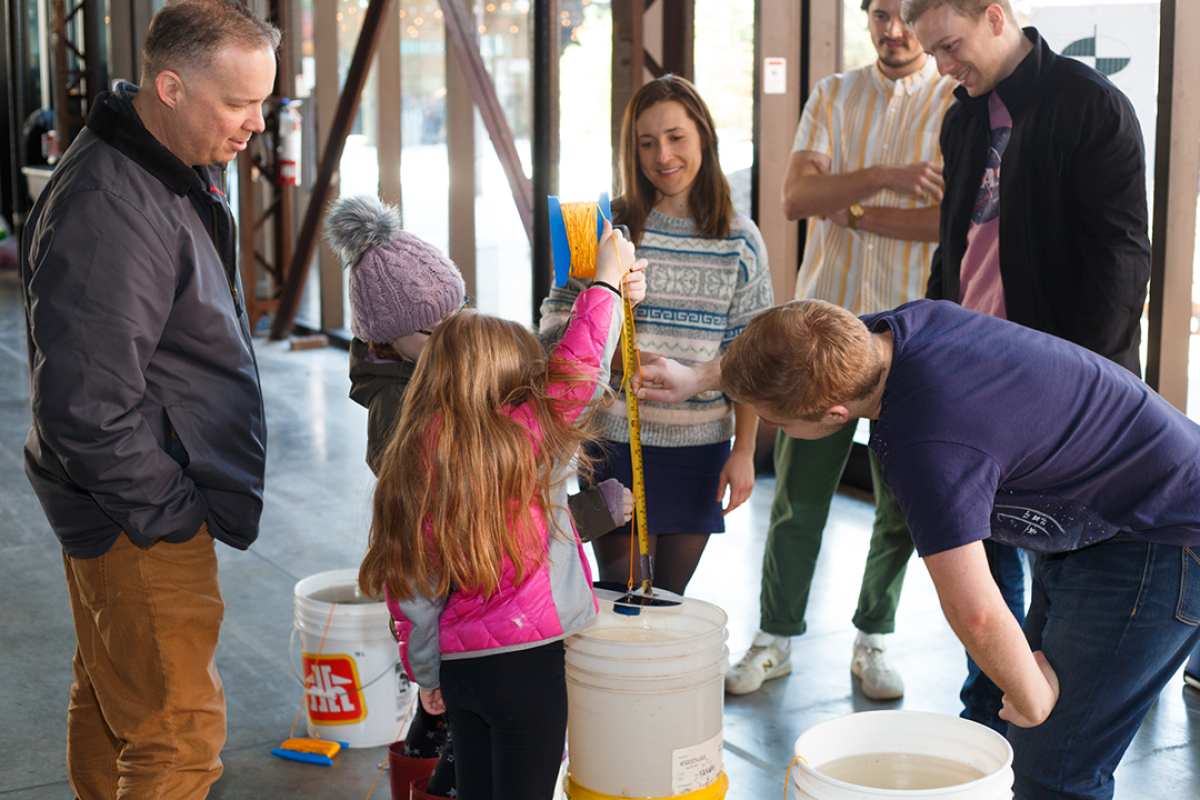At-Home Science Experiments: Secchi Discs
By: Rocky the Rock Ripper
Port Lands Flood Protection relies on many different science and engineering disciplines. To design and build a new river, ecological habitats, parks, roads, bridges – and ultimately a new island – the team draws on everything from geotechnical engineering to environmental testing. This winter, we hosted a science and engineering fair to help people learn more about the science, technology and engineering behind this billion-dollar revitalization.
Now you can replicate some of these experiments at home.
Experiment #3: Secchi Discs
Learn one way we test water quality and how to measure water turbidity at home.
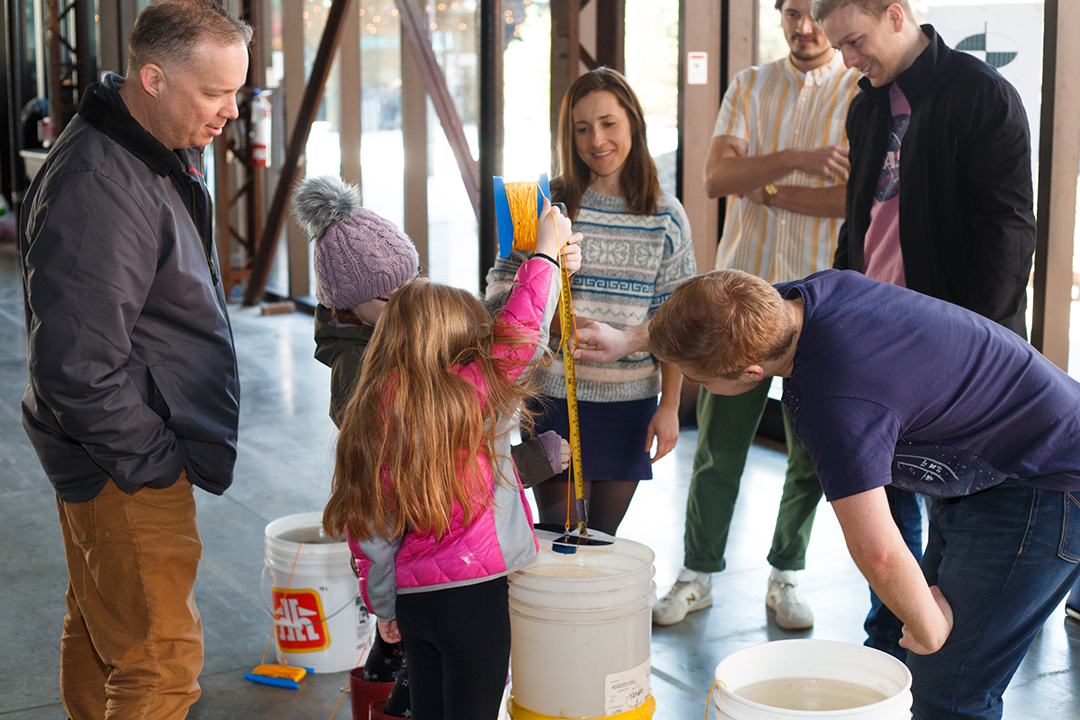
Using some simple tools at home, you can measure the clarity of water.
Team members from Colliers Project Leaders have devised an experiment using Secchi discs to measure water turbidity. With a few materials and some creativity, you can replicate this experiment at home. Thanks to University of Toronto student Avery Clarke for the idea to use Secchi discs for this experiment!
First, let’s explain how this concept is used on the project.
What is turbidity?
Turbidity is one indicator of water quality. It tells us if the water provides a good habitat for fish and other aquatic life. Higher turbidity means more sediment has been redistributed through the water, which can make it a less desirable place for animals to live. We monitored turbidity in the lake during construction on the Cherry Street Lakefilling and will continue that monitoring as construction continues on Port Lands Flood Protection construction. Turbidity monitoring ensures our construction isn't harming animals that live in the water nearby.
What is a Secchi disc?
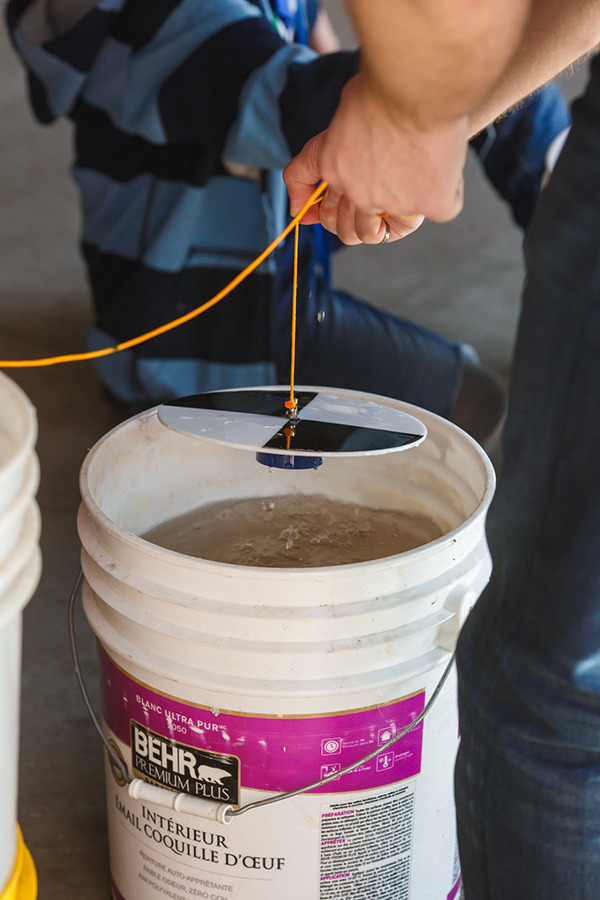
A Secchi disc is lowered into a bucket of water to measure its turbidity.
Secchi discs are black and white circular plastic discs attached to a string. To test the water, they are slowly lowered into the water until they are no longer visible. Then, we find out how deep the disc is by measuring the length of string that went underwater. The discs are black and white to make them easier to see in any kind of weather.
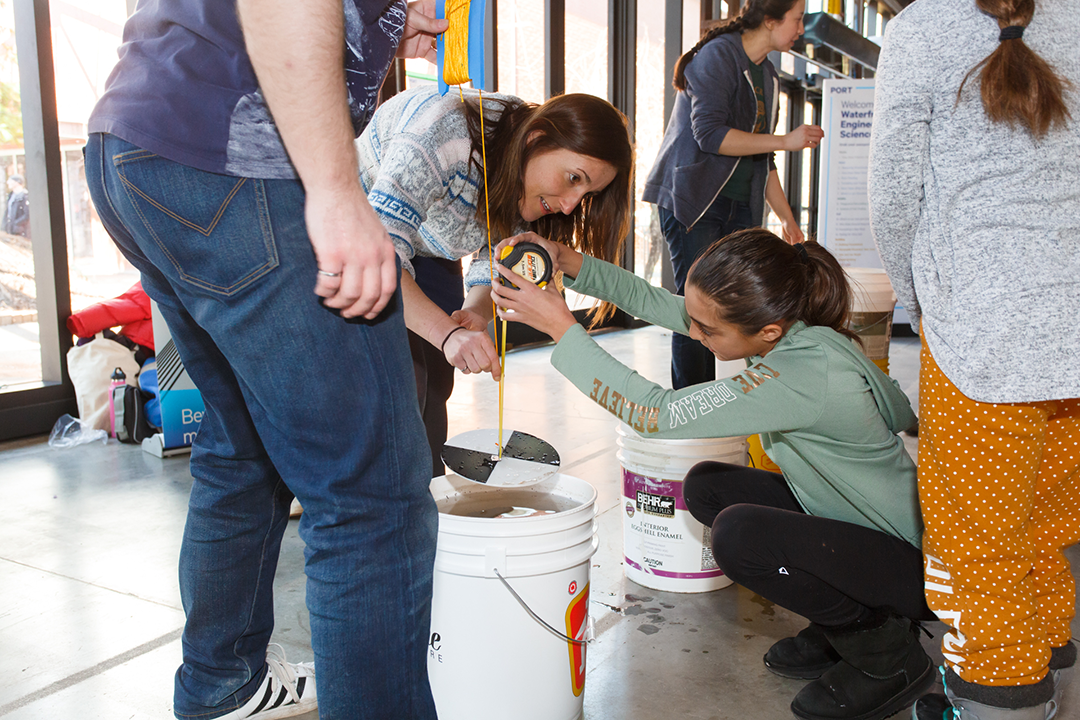
This young scientist is checking how deep the Secchi disc went using a tape measure. This number allows us to quantify the water turbidity and compare it with other samples.
Now, let’s try the experiment at home
What you’ll need:
- A Secchi Disc (while you can purchase Secchi Discs, you can also make your own! See instructions below)
- Tape measure
- Buckets or other large containers full of water
- Water with varying amounts of dirt and sediment
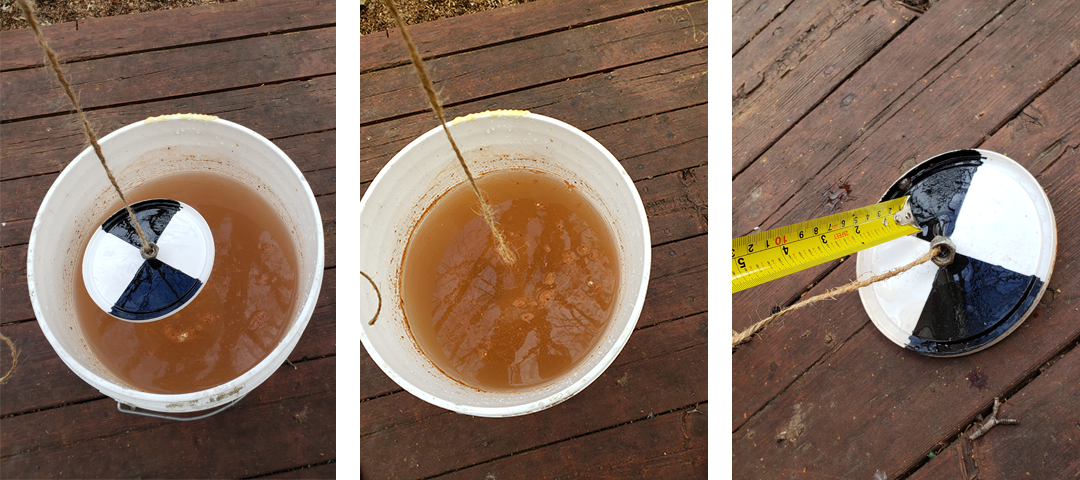
How to do the experiment:
- Fill the buckets with water with different amounts of dirt or sand (sediment). You can use sand or soil from your backyard or anything made of small particles that won’t dissolve– like flour, cornstarch, or cocoa powder.
- Slowly lower the Secchi Disc into the bucket and continue to lower it until you can’t see the disc anymore, stop lowering it when the disc disappears.
- Pinch the string attached to the disc where it meets the water and pull the disc out of the water.
- Measure the string from where you are pinching it to the disc. Record your measurement to compare to other buckets of water.
- Try this with different types of “sediment” and with different amounts and see how that changes how far you can lower the disc before it disappears.
Make your own Secchi disc (adult supervision required):
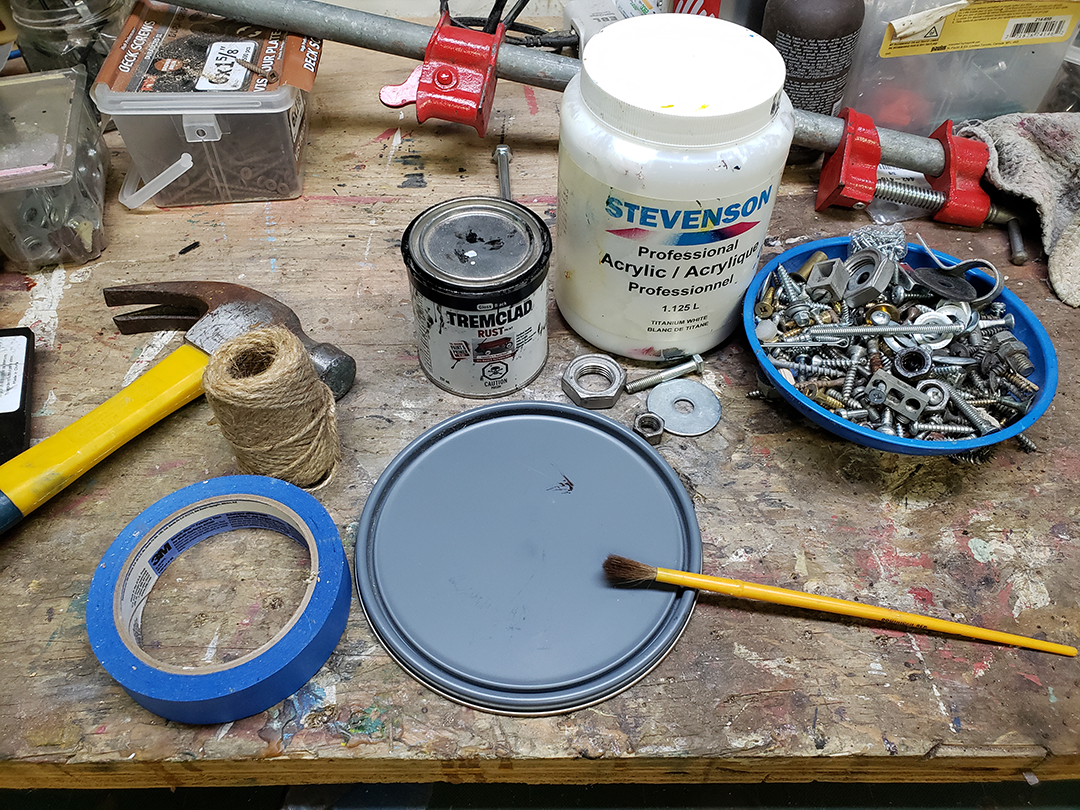
Gather all the materials you will need to make a Secchi disc at home.
What you’ll need:
- A large, flat, circular object that you can put a hole in, such as a coffee can or margarine lid, frisbee or plastic plate
- Black and white waterproof paint (such as acrylic). If your disc is already black or white, you only need the other colour of paint. If you don’t have paint, waterproof tape, such as electrical tape, or a black permanent marker on a white disc would probably work as well
- A long string (approximately 1 metre)
- A weight such as a washer, hex nut, or spare change to help the disc sink
How to make it:
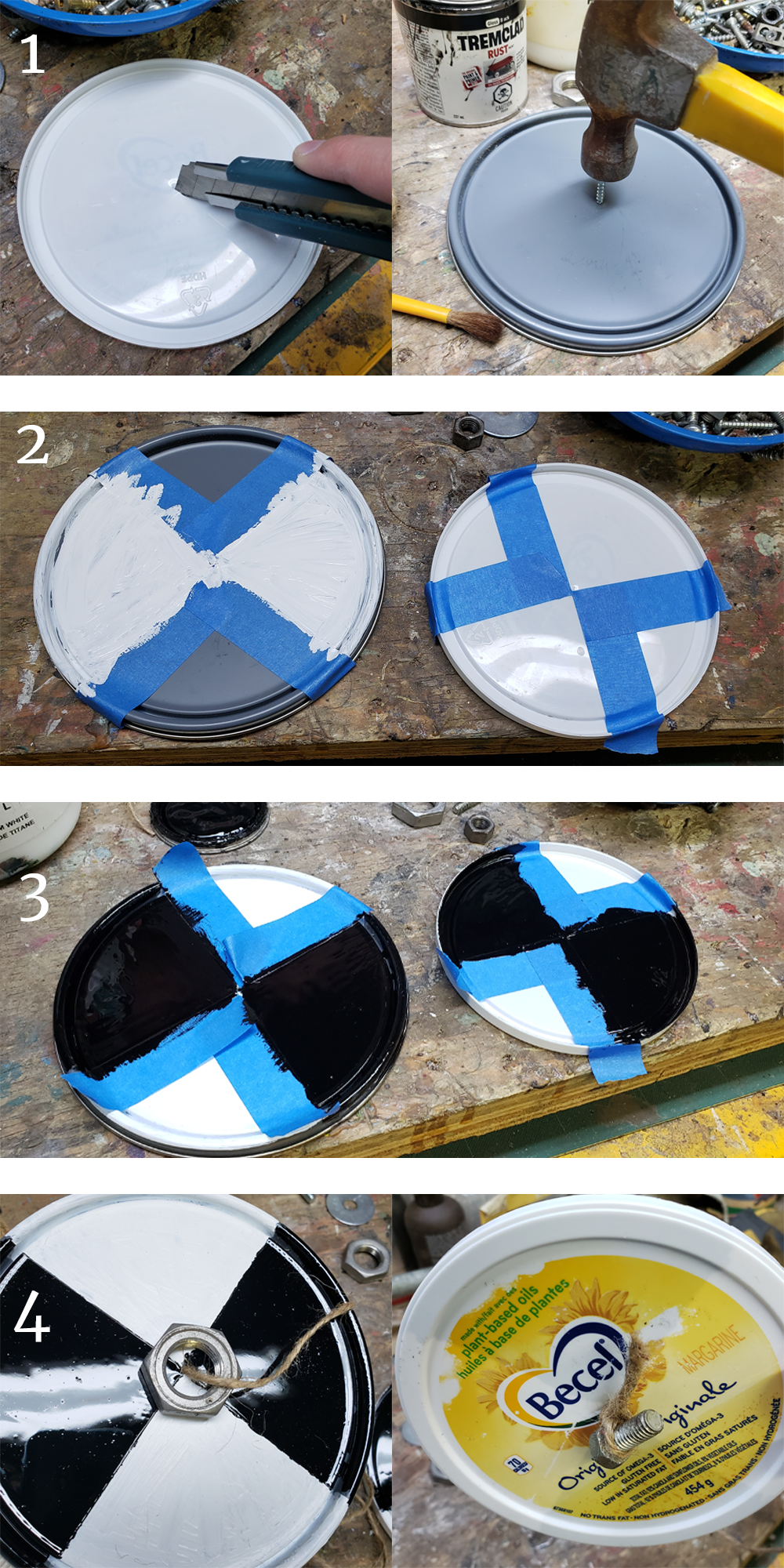
- Start by making a hole in the centre of your disc (using a sharp knife, hammer and nail, or drill)
- Divide the disc into 4 quadrants by drawing an X across the disc using a marker or tape
- Make two opposite quadrants white and the other two black
- Once the paint is dry, put a washer or hex nut on top of the hole in the disc to weight it down (optional). Thread the string through the weight and disc, then tie it to another nut or something else heavy, like a bolt, to secure the string underneath the disc.
Happy experimenting!

